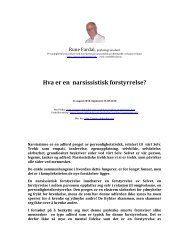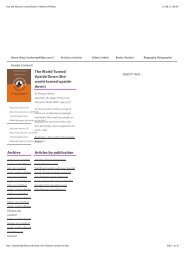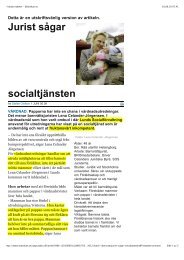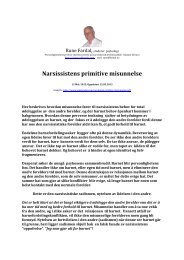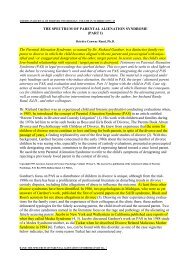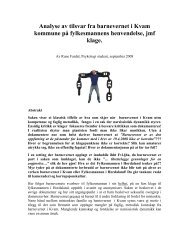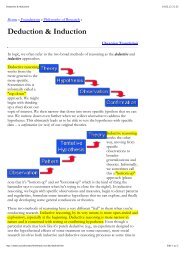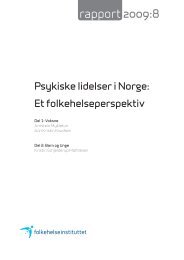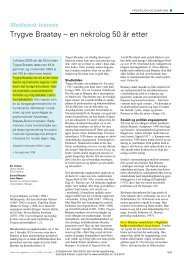The origins of narcissism and narcissistic personality disorder a
The origins of narcissism and narcissistic personality disorder a
The origins of narcissism and narcissistic personality disorder a
You also want an ePaper? Increase the reach of your titles
YUMPU automatically turns print PDFs into web optimized ePapers that Google loves.
82 JOHN s. AUERBACH<br />
<strong>of</strong> increased stress, reduced structure, or disturbance in relationships<br />
with significant others (Adler & Buie, 1979; Blatt & Auerbach, 1988;<br />
Blatt & Shichman, 1983).<br />
Associated with object permanence, the ability to recall an object<br />
that has been hidden from view (Piaget, 1937/1954), as well as with<br />
reflexive self-awareness, evocative constancy also emerges during the<br />
second year <strong>of</strong> life (Fraiberg, 1969). But whereas borderline personalities,<br />
under conditions <strong>of</strong> stress, will have difficulty in calling to mind<br />
images either <strong>of</strong> a benevolent, nurturing object or <strong>of</strong> a competent,<br />
effective self or <strong>of</strong> both, <strong>narcissistic</strong> personalities can easily evoke cohesive<br />
self- <strong>and</strong> object images. <strong>The</strong> problem for these individuals is<br />
that the vitality <strong>of</strong> the self-image requires the deadening <strong>of</strong> the images<br />
<strong>of</strong> others <strong>and</strong> vice versa. Narcissistic object relations involve either a<br />
gr<strong>and</strong>iose, exhibitionistic self <strong>and</strong> an empty, shadowing other, or else<br />
an idealized, inflated other <strong>and</strong> a depleted, shadowing self. Thus, the<br />
representational disturbance for <strong>narcissistic</strong> personalities is a difficulty<br />
not in evoking stable, vital images <strong>of</strong> self <strong>and</strong> other but instead in<br />
making a smooth transition between vital images <strong>of</strong> the self <strong>and</strong> vital<br />
images <strong>of</strong> the object-between subjective <strong>and</strong> objective forms <strong>of</strong> selfawareness<br />
(Bach, 1985).<br />
Varieties <strong>of</strong> Narcissistic Disturbance: Gr<strong>and</strong>iosity<br />
<strong>and</strong> Shame<br />
In his classic description <strong>of</strong> <strong>narcissistic</strong> <strong>personality</strong> <strong>disorder</strong>, Kernberg<br />
(1975, p. 227-228) writes, <strong>of</strong> the peculiar tension between gr<strong>and</strong>iose<br />
self-preoccupation <strong>and</strong> intense psychological need:<br />
<strong>The</strong> patients present an unusual degree <strong>of</strong> self-reference in their<br />
interactions with other people, a great need to be loved <strong>and</strong> admired<br />
by others, <strong>and</strong> a curious apparent contradiction between a very<br />
inflated concept <strong>of</strong> themselves <strong>and</strong> an inordinate need for tribute<br />
from others.. . . On the surface these patients appear to present a<br />
remarkable lack <strong>of</strong> object relationships; on a deeper level, their<br />
interactions reflect very intense, primitive internalized object relationships<br />
<strong>of</strong> a very frightening kind <strong>and</strong> an incapacity to depend<br />
on internalized good objects.<br />
H. B. Lewis (1980, 1987) regards shame as the affect that mediates the<br />
tension between gr<strong>and</strong>iosity on the one h<strong>and</strong> <strong>and</strong> feelings <strong>of</strong> neediness




